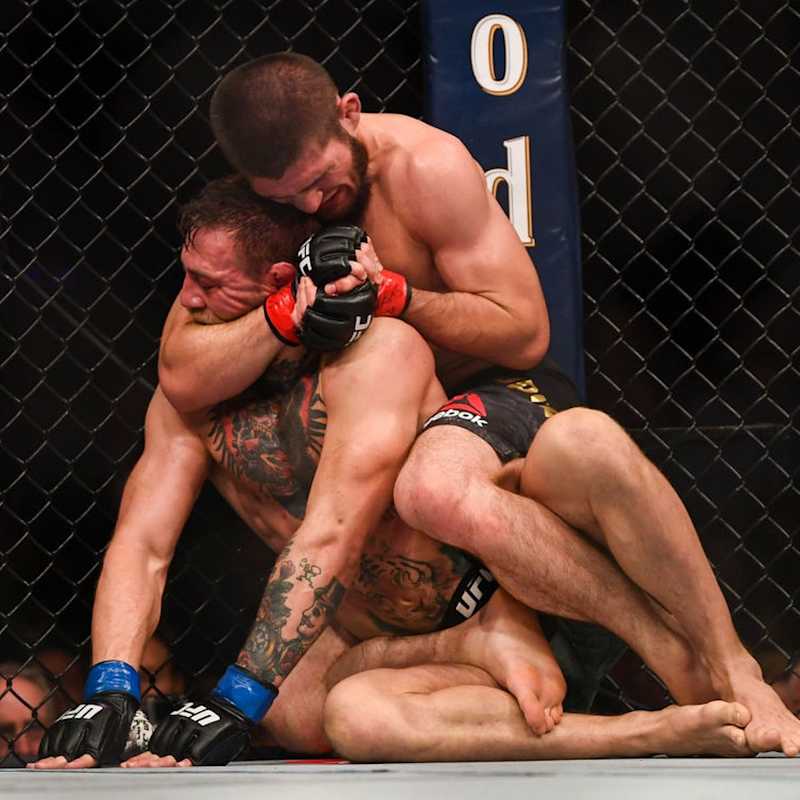Guide to MMA / UFC Scoring & Rules
Posted on 28 March, 2022
These are the rules and scoring most commonly used by MMA promotions like the UFC. The promotions don't usually set up these rules themselves, they are done by an Athletic commision. Read about the distinction here. If you're interested, here is a link to the official Unified Rules of MMA. It's long.
Below are the highlights to the most important rules and scoring information that you need to know as an MMA fan.
Rounds
Each round is 5 minutes long. The is a 1 minute rest between rounds. All fights are 3 rounds except for championship fights, main events, and some rare exceptions (e.g. Nate Diaz vs Leon Edwards).
Scoring

The winner of a round gets 10 points and the loser gets 9 or fewer depending on how badly they lost the round. The worse the loser did that round, the fewer points they get. This is called a 10 point must system and was adopted from boxing.
A 10-10 round means they tied.
A 10-9 round means one person won
A 10-8 round means the winner dominated their opponent
A 10-7 round (extremely rare) means it was close to fight ending levels of domination.
The round winner is decided by the following criteria in order of descending consideration:
Who did more damage
Effective striking/grappling
Aggression
Ring/cage control
If they did equal amounts of damage, the judges decide the round winner by looking at the next criteria (effective striking). If one fighter did more damage than the other, then the other criteria are ignored. And so on. There are 3 judges who have 30 seconds after each round to decide who won each round. The fighter who won on more judges' scorecards, wins the fight
Ways to Win

Finishes
The fight can end at any time due to a finish.
Knockout (KO)
The opponent is rendered unconscious due to a strike.
Technical Knockout (TKO)
When the referee decides to intervene because one fighter is taking too much damage and can't continue.
Submission
When an opponent gives up via "tapping" or when the opponent is rendered unable to continue (e.g. by being choked unconscious) due to a grappling technique. Tapping is when you tap your opponent or the floor to indicate that you gave up. Fighters can also verbally indicate to the referee that they give up as well.
Corner / Doctor's Stoppage
A corner (the coaches that instruct the fighter during the fight and in between rounds) can stop a fight at any time. This is done by throwing in a towel into the cage or informing the referee. This is more common in boxing than in MMA.
Doctor's Stoppage
The ringside doctor can also stop the fight if they deem it unsafe for a fighter to continue. This is done when the doctor is asked by a ref to examine an injury that a fighter has sustained.
Judges Decision
If there is no finish and there are no more rounds, it goes to the judges scorecards. Draws of any kind are rare in MMA. Don't bother learning the distinction between the types of draws.
Unanimous Decision (UD)
All 3 judges declared the same fighter the winner.
Split Decision (SD)
2 judges declared one fighter as the winner, 1 judge declared the other fighter as the winner.
Unanimous Draw
All 3 judges scored it a draw.
Majority Draw
2 judges scored it a draw, one judge declared a winner.
Split Draw
1 judge scored it a draw, the other 2 declared opposite winners.
No Context (NC)
When a fight ends without a winner declared. Usually if the winner gets caught for performance enhancing drugs after their bout or there's an accidental foul that prevents the fighter from continuing. The one caveat is that if there's an accidental foul after more the majority of the scheduled rounds took place, then it goes to a technical decision (whoever was up on the scorecards at that point wins).
Fouls

Types of Fouls
Common Fouls
Punches to the back of the head or spine
Groin strikes
Eye pokes
Grabbing the fence
Grabbing the opponents glove
Grabbing the opponent's shorts
Uncommon Fouls
Kneeing / Kicking downed opponent in the head. (This is legal in some promotions (e.g. ONE Championship). Aljamain Sterling famously won his UFC bantamweight championship belt off of an illegal knee by his opponent Petr Yan.)
12-6 elbows (downward directed elbows)
Avoiding contact with your opponent (there's a lot of lee-way here)
Rare Fouls
Pulling hair
Biting
Spitting on an opponent
Putting fingers in mouths or other holes
Abusive language
Ignoring the ref
Unsportsmanlike conduct that results in injury
Hitting the opponent after the bell or during a break
Attacking an opponent after the ref stops the fight
Very Rare Fouls
Spiking (dropping them on the top of their head or neck) an opponent who isn't holding you
Stomping on a downed opponent
Throat strikes
Headbutts
Pinching
Clawing
Trying to break toes or fingers
Throwing an opponent out of the cage
Fighter's corners interfering
Foul Recovery and Rules
The first foul usually results in a verbal warning by the ref. Multiple offenses and intentional fouls can lead to the ref penalizing the offending fighter by a point or a DQ. In practice, this rarely happens. Some refs are known for letting more fouls go (e.g. Herb Dean) and others are more restrict (e.g. Jason Herzog). Fighters can request to not have certain referees ref their fights.